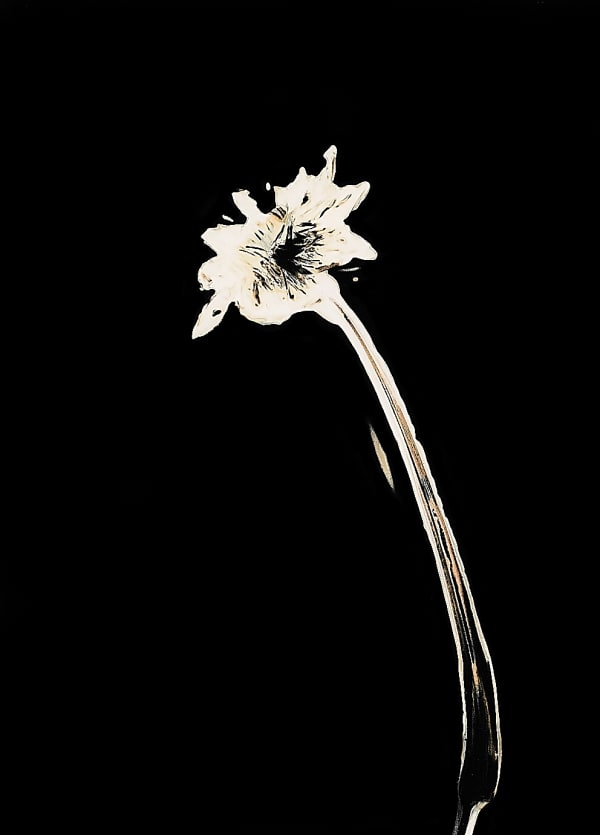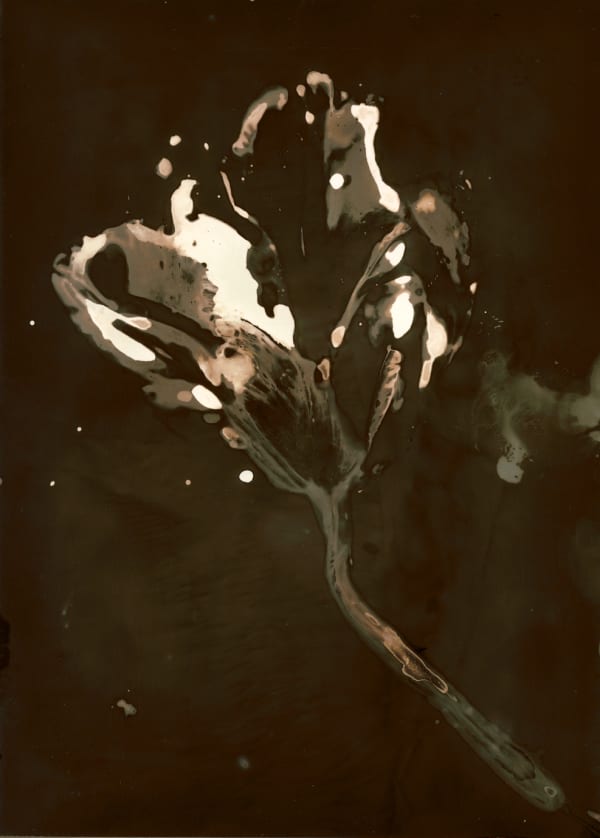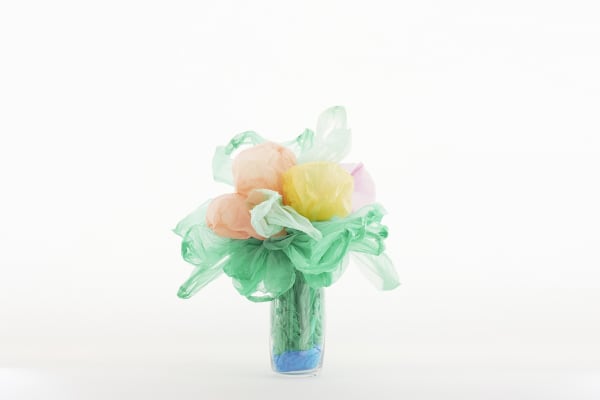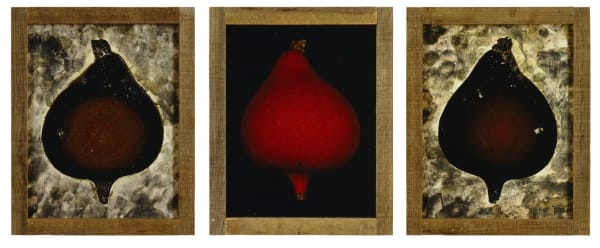Of Plants: Experimental Prints: Group show
From September 4 to October 30, 2021, the exhibition Of Plants: Experimental Prints brings together the crossed perspectives of Thierry Balanger, Sébastien Camboulive, Pascal Kern and Paul Pouvreau. Their organic compositions, whether imprints or factitious, lush or nebulous, attest to their singular place in French contemporary photography.
-
 Thierry Balanger, Fleurs cassées #4
Thierry Balanger, Fleurs cassées #4 -
 Thierry Balanger, Fleurs cassées #14, 2000
Thierry Balanger, Fleurs cassées #14, 2000 -
 Thierry Balanger, Fleurs cassées #9, 2000
Thierry Balanger, Fleurs cassées #9, 2000 -
 Thierry Balanger, Fleurs cassées #18, 2021
Thierry Balanger, Fleurs cassées #18, 2021
-
 Thierry Balanger, Fleurs cassées #19, n.d.
Thierry Balanger, Fleurs cassées #19, n.d. -
 Thierry Balanger, Fleurs cassées #6, 2021
Thierry Balanger, Fleurs cassées #6, 2021 -
 Thierry Balanger, Fleurs cassées #5, 2002
Thierry Balanger, Fleurs cassées #5, 2002 -
 Thierry Balanger, Fleurs cassées #7, 2002
Thierry Balanger, Fleurs cassées #7, 2002
-
 Thierry Balanger, Fleurs cassées #8, 2002
Thierry Balanger, Fleurs cassées #8, 2002 -
 Thierry Balanger, Fleurs cassées #17, 2002
Thierry Balanger, Fleurs cassées #17, 2002 -
 Thierry Balanger, Fleurs cassées #28
Thierry Balanger, Fleurs cassées #28 -
 Thierry Balanger, Fleurs cassées #2
Thierry Balanger, Fleurs cassées #2
-
 Sébastien Camboulive, Point d'équilibre #8, 2021
Sébastien Camboulive, Point d'équilibre #8, 2021 -
 Sébastien Camboulive, Point d'équilibre #11, 2021
Sébastien Camboulive, Point d'équilibre #11, 2021 -
 Sébastien Camboulive, Point d'équilibre #3, 2021
Sébastien Camboulive, Point d'équilibre #3, 2021 -
 Sébastien Camboulive, Point d'équilibre #5, 2021
Sébastien Camboulive, Point d'équilibre #5, 2021
Les Douches la Galerie is proud to present a group of experimental photographs that highlight the vegetal world, and nature more broadly. Nature is at once a subject to be explored and a model to imitate for its capacity to engender and produce forms. The ambition of these four series is not so much to recognize the real existence of things as to affirm that the initial model has been superseded. Experimenting and manipulating real or virtual elements is part of their investigation and testifies to the relationships that artists have with sculpture (moulding, modelling), collage and painting. The resulting photographs create a fascinatingly ambiguous reading spread across plant forms.
Each item in Pascal Kern’s Nature (1990) series is presented as a triptych of elements photographed head on: a cucurbit (squash, pumpkin …) on a black background, flanked by prints of it split in two; the coloured pigments within giving it as much a pictural dimension as a sculptural one. The mould, like photographic film, repeats and multiplies the same print frozen in space and time; it captures information about ‘Nature’ whose re-production one can imagine, a multiplied copy that perpetuates the memory of each form. This collection harks back as much to still lifes (the representation of inanimate objects such as flowers, fruit, vegetables, and so on) as to one of its categories: the ‘vanity’ of the original Latin word vanitas literally means ‘state of emptiness’. The unfinished wood framing the Cibachrome prints circumscribes emptiness and fullness, giving the images a volume and weight that mirror the reading of the sculpture.
Paul Pouvreau’s Les Invasives [Invasive] (2018) is also closely tied to sculpture. By manipulating, assembling and juxtaposing coloured plastic bags, the artist creates a form of nature that is all his own. It is an artificial nature, delicately crafted using material that presents a variety of floral species gathered into thoroughly seductive bouquets. His intention is not to replicate specific natural species, since the plastic produces forms and varieties that are inherent to it, yet the artistic nevertheless sublimates the object into modelling and the discovery of the material’s possibilities. This investigation leads to the conjunction of opposites. For the art of cultivating not plants, but seductive and invasive plastic species, is effectively symptomatic of a society faced with paradoxical and contradictory messages that are based, on the one hand, on the systematic stimulation of the desire to consume in ever greater quantities, spurred on by marketing and advertising, and on the other, the need to participate actively in protecting the environment by limiting the production, in particular, of rubbish. As objects that are recycled by an artistic act, frozen by the photographic medium, the Invasives blaze a trail of a new life to be conquered, in the disenchantment of a world whose offspring it majestically signals and sadly colours.
Made up of carbon prints, Sébastien Camboulive’s black and white series, Point d’équilibre [Point of Equilibrium] (2021), puts on display a plethora of plants whose mirror image creates a certain depth as well as hypnotic effects at times reinforced by their passage from positive to negative. Its exuberance and complex development make Point d’équilibre almost a resurgence of the baroque, the triumphal art that rejects austerity and humility. Its reference points are both pictural (Pietro da Cortona’s Allegory of Divine Providence and Barberini Power (1633-1639) in Rome comes to mind) and architectural, tied in particular to the artistry of gardens: geometric designs divided by alleys with meeting points emphasised by fountains or statues, flowerbeds designed like tapestries with strips of shrubs and flowers forming patterns… As in baroque gardens, Camboulive uses symmetry to impose an order on nature while still creating marvelous scenes of illusion and theatricality. In his photographs one can also find grotesque figures (an ornamental style developed in Italy during the Renaissance): human and animal figures, both chimerical and caricatural, developing motifs of doubling, hybridity and transformation.
Thierry Balanger’s Les fleurs cassées [Broken Flowers] (2000-onward) are at the intersection of painting and photography. As with photograms, his chemigrams are made without a camera. Light and chemistry are used together to create images that offer glimpses of types of flowers (roses, tulips, dandelions) and patterns that tend toward abstraction and a world in need of exploration. Planets, constellations, supernovas, the images show another facet of the representation of flowers, but one whose origin is closely tied with plant’s contact with photosensitive paper. In an endless quest for improbable images, experimentation builds on the logic of production, taking into account sheer chance and uncertainty. Flowers are treated like the tracks of a body worn by exploring the limits of the sensitivity of emulsions. The body could just as easily belong to the photographer as to the model she has invited, in a macabre dance, to reenact Hector’s bodily cancellation in Michel Tournier’s Les Suaires de Véronique [Veronica’s Shrouds]1.
Isabelle Tessier, Director of the Vitré Artothèque
Notes
In Michel Tournier’s short story, Véronique, a photographer, intends to make her companion and young model, Victor, as photogenic as possible through direct flash photography.



























